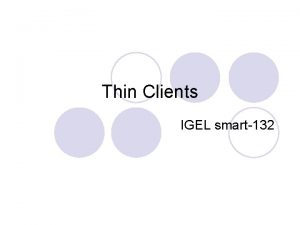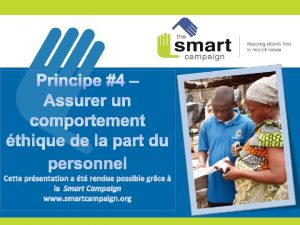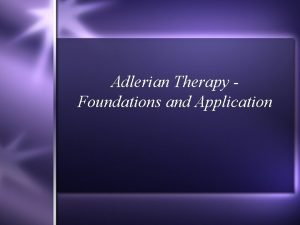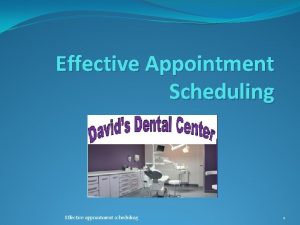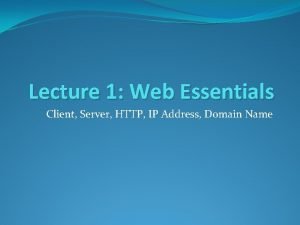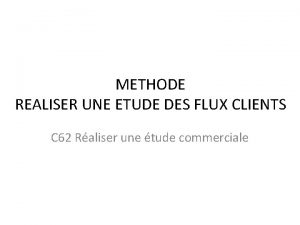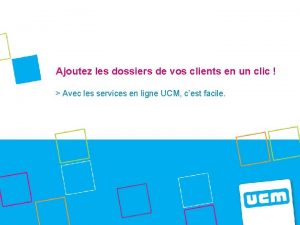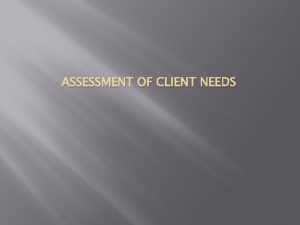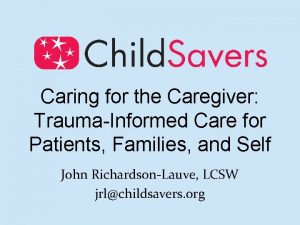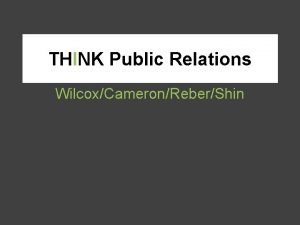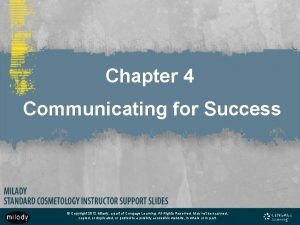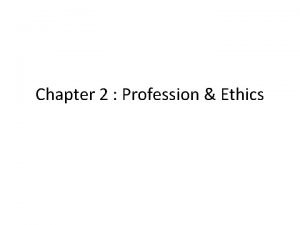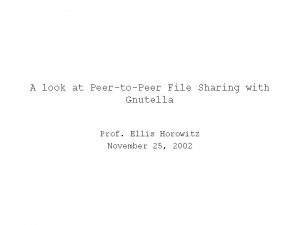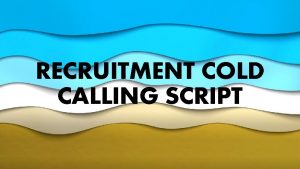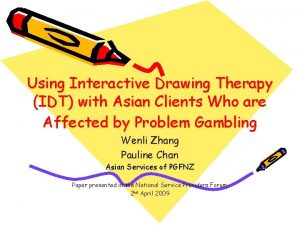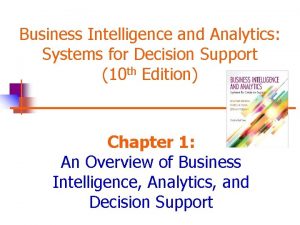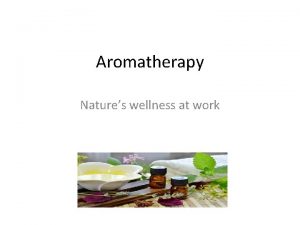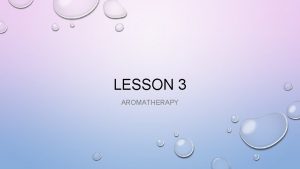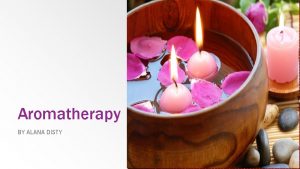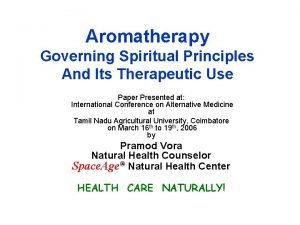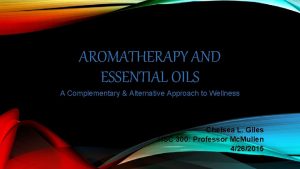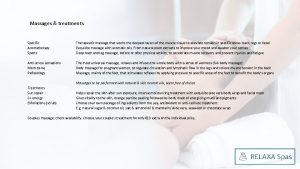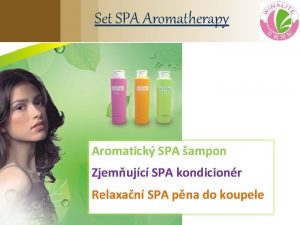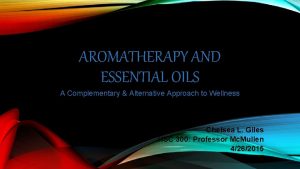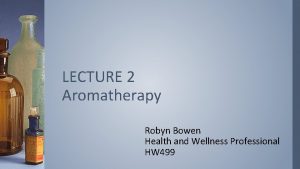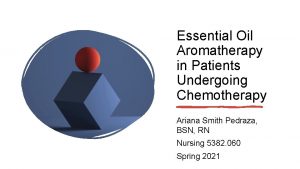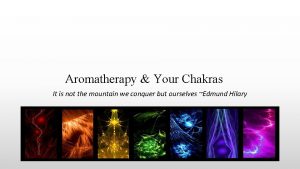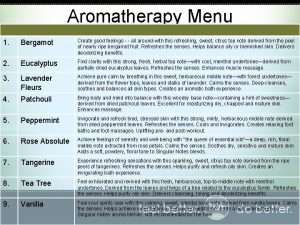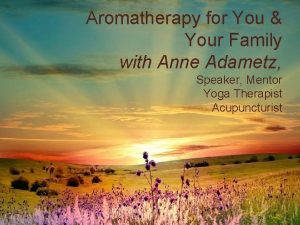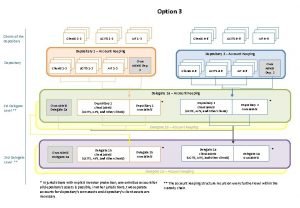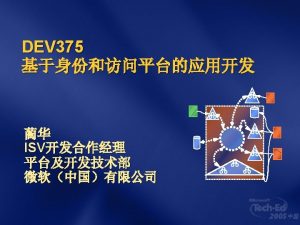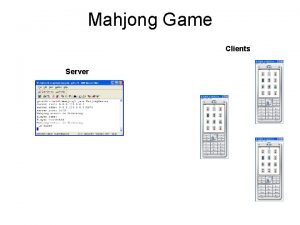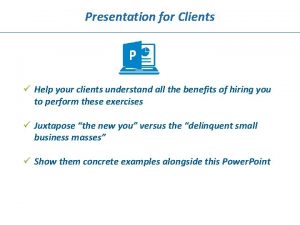The Effectiveness of Aromatherapy in Clients with Cancer











































- Slides: 43

The Effectiveness of Aromatherapy in Clients with Cancer in Reducing Fatigue and Improving Sleep Quality Presented by Jeremy Pierce, MOTS

Objectives n n n n Background Objective Search Methods Summary of Study Procedures Methodological Quality Results My Conclusions

BACKGROUND

What is Cancer? n n n Life threatening tumor invades body tissues Many different forms of disease Many causes for cancer Alcohol & tobacco use n Dietary factors n Genetic factors n

Demographic Data on Cancer n n n Growing problem in U. S. Prevalence— 12 million 2011 projections 1. 5 million new cases of cancer n 500, 000 cancer-related deaths n

Traditional Treatment n n n Radiation therapy Chemotherapy Surgery n Side-effects Anxiety n Depression n Fatigue n Insomnia n Pain n

Cancer-Related Fatigue n n n Symptom of cancer or side-effect of tx 96% of clients with cancer Usually doesn’t resolve after tx Usually not screened for Associated with poor sleep quality

Treatments for Fatigue n n n Energy conservation and activity management Psychosocial support (CBT) CAM Aromatherapy n Hatha yoga n Meditation n

Aromatherapy n n Uses aromatic essential oils Can be used to relieve hundreds of symptoms Many types of oils used Different methods Massage n Inhalation n Soaking n

Physiological Mechanism n n n Exact mechanism is unknown Oils are similar in structure to cell membranes, which helps them get into the bloodstream Aroma activates olfactory nerve

Justification for Evidence Review n n n Cancer is a growing problem Cancer-related fatigue is a common symptom in clients with cancer Aromatherapy is being used to tx cancerrelated fatigue

OBJECTIVE The objective of this review is to examine the extent to which the research literature supports the use of aromatherapy as a more effective approach to decreasing fatigue and improving sleep quality in clients with cancer.

SEARCH METHODS Databases Searched n n n CINAHL (EBSCOhost: 1994 to 10/8/11) Google scholar (1992 to 10/2/11) Pub. Med (1991 to 10/9/11) Search Terms n n n n Aromatherapy Cancer-related fatigue Fatigue Inertia Oncology Physical Exhaustion Sleep

SUMMARY OF STUDY PROCEDURES

Types of Study Designs n n Individual randomized controlled trial – 4 Mixed method design – 1 Controlled clinical trial – 1 One group pre-post studies – 4

Populations Sampled n Clients with cancer Breast cancer only – 1 study n Hematological malignancies – 1 study n n Clients sampled from… Palliative- or cancer-care centers n 1 study sampled from a hematology transplant unit n

Inclusion Criteria n Age Minimum of 16 -20 years – 4 studies n Maximum age of 70 in one study n Most studies did not have age criteria n n Gender, race, & ethnicity—no criteria

Exclusion Criteria n n n Individuals who used aromatherapy in pass 6 months – 2 studies Individuals using aromatherapy on their own – 1 study 2 studies excluded individuals with mental or cognitive disorders

Sample Sizes n 12 to 58 participants – 8 studies n 103 participants – 1 study n 313 participants – 1 study

Relevant Demographics n Age range – 17 to 93 years n Average – 51 to 73 years n n Gender Majority female – 6 studies n Majority male – 3 studies n Gender information not given – 1 study n

Experimental Interventions n Method Aromatherapy massage – 7 articles n Inhalation aromatherapy – 2 articles n Footsoak and reflexology – 1 article n n Oils used Varied, but half used lavender n 4 let client’s choose n

Number and Duration of Intervention Sessions n Number 3 -5 sessions – 5 studies n 1 session – 2 studies n Other studies varied or did not indicate # n n Duration – 15 to 60 minutes

Types of Outcome Measures n n n 3 studies used the Profile of Mood States 2 studies used unnamed assessments Other studies used other assessments

METHODOLOGICAL QUALITY

Threats to Validity n No control group Pre-post studies n Three acknowledged this n n n Mortality and attrition Inadequate information

Low Sample Size n n n Imanishi et al. (2009) & Kohara et al. (2004) had sizes of 12 & 20 Three studies had total sample sizes over 40, but intentions groups had sizes of 23 or less Wilkinson et al. (1999) stated they needed a larger sample

Psychometric Properties of Assessments n 2 used non-standardized tests Kite et al. (2008) n Stringer and Donald (2008) n n Wilkinson et al. (1999) used a subtest only n Not psychometrically evaluated

RESULTS

Pre-Post Studies n Pre-post studies showed decreased fatigue n n n Kohara et al. (2004): p < 0. 001 Stringer et al. (2008) & Wilkinson et al. (1999): p < 0. 05 Imanishi et al. (2009), Kite et al. (1998), & Stringer & Donald (2011): no p-values

Aromatherapy vs. Massage Only vs. Control n Aromatherapy massage vs. control group & massage only vs. control group 3 studies showed significant improvements (p < 0. 05) n 1 study showed no improvement (Wilcock, 2004) n n Aromatherapy massage vs. massage only n Stringer et al. (2008) & Wilkinson et al. (1999) using p < 0. 005 and < 0. 0001 showed no improvement.

Long-Term Effects of Aromatherapy n Aromatherapy vs. CBT (Serfaty et al. , 2011) Short-term: aromatherapy massage > CBT n Long-term (3 months & 6 months): aromatherapy < CBT n No p-value reported, but significance stated n n Imanishi et al. (2009) Showed favorable results 3 months out n Did not report significance n

Aromatherapy Not Beneficial n n Wilcock et al. , 2004 Graham et al. , 2003 Put essential oils on bibs for clients to use during radiation treatment n Found that fatigue got worse for control group and intervention group n

MY CONCLUSIONS

Discussion n n Generally speaking, aromatherapy is beneficial – 8 of 10 articles indicated this However Many threats to validity and in these studies n Several studied did not report p-values n For aromatherapy massage, the benefits appear to be due to the massage, not the essential oils n

Discussion cont’d n Long-term vs. Short-term n n Long-term benefits not likely Graham et al. n Found that an association developed between side-effects of treatment and the scent of the essential oils

Implications For OT Practice n Aromatherapy can be used by OT’s to: Reduce clients’ fatigue to improve energy for participation in occupations n Improve clients’ sleep participation n n Practitioners must be aware of negative associational effects of essential oils n Do not provide aromatherapy during radiation treatment

Implications for OT Practice, cont’d n OT’s must understand that effects of aromatherapy are short-term Teach clients and caregivers how to perform aromatherapy in the absence of the OT n Provide clients with aromasticks to help with rest and sleep n n Use aromatherapy massage Adjunct to massage n Client-centered n

Implications for Future Research n Aromatherapy needs more research n n n Effects of aromatherapy on fatigue and sleep quality are even more limited Need research on OT interventions that improve sleep participation Which essential oils are beneficial?

References n n n n American Cancer Society. (2011 a). Cancer facts and figures 2011. Retrieved from http: //www. cancer. org/acs/groups/content/ @epidemiologysurveilance/documents/document/acspc-029771. pdf American Cancer Society. (2011 b). The history of cancer. Retrieved from http: //www. cancer. org/Cancer. Basics/The. Historyof. Cancer American Cancer Society. (2011 c). Treatment types. Retrieved from http: //www. cancer. org/Treatmentsand. Side. Effects/ Treatment. Types/index American Occupational Therapy Association. (2008). Occupational therapy practice framework: Domain and process (2 nd ed. ). American Journal of Occupational Therapy, 625 -683. Anand, P. , Kunnumakara, A. B. , Sundaram, C. , Harikumar, K. B. , Tharakan, T. T. , Lai, O. S. , … Aggarwal, B. B. (2008). Cancer is a preventable disease that requires major lifestyle changes. Pharmaceutical Research, 25(9), 2097 -2116. Ancoli-Israel, S. , Moore, P. J. , & Jones, V. (2001). The relationship between fatigue and sleep in cancer patients: A review. European Journal of Cancer Care, 10(4), 245 -255. Barsevick, A. M. , Dudley, W. , Beck, S. , Sweeney, C. , Whitmer, K. , & Nail, L. (2004). A randomized clinical trial of energy conservation for patients with cancer-related fatigue. Cancer, 100, 1302 -1310.

References cont’d n n n Center for Disease Control and Prevention. (2011). Cancer survivors: United States, 2007. Morbidity and Mortality Weekly Report, 60(9), 269 -296. de Haes, J. C. J. M. , Olschewski, M. , Fayers, P. , Visser, M. R. M. , Cull, A. , Hopwood, P. , Sanderman, R. (1996). Measuring the quality of life of cancer patients with the Rotterdam Symptom Checklist: A manual. Retrieved from http: //www. rug. nl/ gradschoolshare/research_tools/assessment_tools/ rscl_handleiding. pdf Engstrom, C. , Strohl, R. A. , Rose, L. , Lawandowski, L. , & Stefanek, M. (1999). Sleep alterations in cancer patients. Cancer Nursing, 22(2), 143 -148. Essential Science Publishing. (1999). People’s desk reference for essential oils. Orem, UT: Essential Science Publishing. Graham, P. H. , Browne, L. , Cox, H. , & Graham, J. (2003). Inhalation aromatherapy during radiotherapy: Results of the placebo-controlled double -blind randomized trial. Journal of Clinical Oncology, 12(12), 2372 -2376. Howlader, N. , Noone, A. M. , Krapcho, M. , Neyman, N. , Aminou, R. , Waldron, W. , … Edwards, B. K. (Eds. ). SEER cancer statistics review 1975 -2008. Retrieved from http: //seer. cancer. gov/csr/1975_2008

References cont’d n n n Imanishi, J. , Kuriyama, H. , Shigemori, I. , Watanabe, S. , Aihara, Y. , Kita, M. , … Fukui, K. (2009). Anxiolytic effect of aromatherapy massage in patients with breast cancer. Evidence-based Complementary and Alternative Medicine (e. CAM), 6(1), 123 -128. Kite, S. M. , Maher, E. J. , Anderson, K. , Young, T. , Young, J. , Wood, J. , … Bradburn, J. (1998). Development of an aromatherapy service at a cancer centre. Palliative Medicine, 12, 171 -180. Kohara, H. , Miyauchi, T. , Suehiro, Y. , Ueoka, H. , Takeyama, H. , & Morita, T. (2004). Combined modality treatment of aromatherapy, foot soak, and reflexology relieves fatigue in patients with cancer. Journal of Palliative Medicine, 7(6), 791 -796. National Cancer Institute. (2007). Radiation therapy side effects. Retrieved from http: //www. cancer. gov/cancertopics/coping/radiation-therapy-andyou/page 6 National Cancer Institute. (2011). Aromatherapy and essential oils (PDQ). Retrieved from http: //www. cancer. gov/cancertopics/pdq/cam/ aromatherapy/healthprofessional/page 4

References cont’d n n n National Cancer Institute. (n. d. a). A to Z list of cancers. Retrieved from http: //www. cancer. gov/cancertopics/types/alphalist National Cancer Instiute (n. d. b). Chemotherapy side effects fact sheet. Retrieved from http: //wwwcancer. gov/cancertopics/coping/chemo-sideeffects Serfaty, M. , Wilkinson, S. , Freeman, C. , Mannix, K. , & King, M. (2011). The To. T study: Helping with Touch or Talk (To. T): A pilot randomized controlled trial to examine the clinical effectiveness of aromatherapy massage versus cognitive behaviour therapy for emotional distress in patients in cancer/palliative care. Psycho-Oncology. Advance online publication. doi: 10. 1002/pon. 1921 Silver, J. K. , & Gilchrist, L. S. (2011). Cancer rehabilitation with a focus on evidence-based outpatient physical and occupational therapy interventions. American Journal of Physical Medicine and Rehabilitation 90 (5), S 5 -S 15. Soden, K. , Vincent, K. , Craske, S. , Lucas, C. , & Ashley, S. (2004). A randomized controlled trial of aromatherapy massage in a hospice setting. Palliative Medicine, 18(2), 87 -92.

References cont’d n n n Sood, A. , Barton, D. L. , Bauer, B. A. , & Loprinzi, C. L. (2007). A critical review of complementary therapies for CRF. Integrative Cancer Therapies, 6(1), 8 -13. Stringer, J. , & Donald, G. (2011). Aromasticks in cancer care: An innovation not to be sniffed at. Complementary Therapies in Clinical Practice, 17, 116121. Stringer, J. , Swindell, R. , & Dennis, M. (2008). Massage in patients undergoing intensive chemotherapy reduces serum cortisol and prolactin. Psycho-Oncology, 17, 1024 -1031. University of Idaho College of Science. (2004). Amygdala. Retrieved from http: //www. sci. uidaho. edu/med 532/amygdala. htm Wilcock, A. , Manderson, M. , Weller, R. , Walker, G. , Carr, D. , Carey, A. , Broadhurst, D. , … Ernst, E. (2004). Does aromatherapy massage benefit patients with cancer attending a specialist palliative care day centre? . Palliative Medicine, 18, 287 -290. Wilkinson, S. , Aldridge, J. , Salmon, I. , Cain, E. , & Wilson, B. (1999). An evaluation of aromatherapy massage in palliative care. Palliative Medicine, 13, 409 -417.
 Nachteile thin clients
Nachteile thin clients Nudge for clients
Nudge for clients Principe de protection des clients
Principe de protection des clients Ece 450
Ece 450 Spitting in the client’s soup
Spitting in the client’s soup Scalp conditioner definition
Scalp conditioner definition How to schedule appointments with clients
How to schedule appointments with clients Web essentials clients servers and communication
Web essentials clients servers and communication Multicultural view of existentialism
Multicultural view of existentialism étude de flux
étude de flux Ucm service en ligne
Ucm service en ligne Counseling multicultural clients
Counseling multicultural clients Clients needs assessment
Clients needs assessment Trauma-informed questions for clients
Trauma-informed questions for clients Clients often criticize public relations firms for
Clients often criticize public relations firms for Milady client consultation form
Milady client consultation form Characteristics of a profession
Characteristics of a profession Typologie des clients insatisfaits
Typologie des clients insatisfaits Gnutella clients
Gnutella clients Social work assessment questions for clients
Social work assessment questions for clients Recruitment call script
Recruitment call script Idt therapy
Idt therapy Using bird dogs when prospecting for clients refers to
Using bird dogs when prospecting for clients refers to Sabre helps its clients through dashboards and analytics
Sabre helps its clients through dashboards and analytics Ibm thin clients
Ibm thin clients Trời xanh đây là của chúng ta thể thơ
Trời xanh đây là của chúng ta thể thơ Lp html
Lp html So nguyen to
So nguyen to Thiếu nhi thế giới liên hoan
Thiếu nhi thế giới liên hoan Vẽ hình chiếu vuông góc của vật thể sau
Vẽ hình chiếu vuông góc của vật thể sau Các châu lục và đại dương trên thế giới
Các châu lục và đại dương trên thế giới Thế nào là hệ số cao nhất
Thế nào là hệ số cao nhất Hệ hô hấp
Hệ hô hấp Tư thế ngồi viết
Tư thế ngồi viết Cái miệng nó xinh thế
Cái miệng nó xinh thế đặc điểm cơ thể của người tối cổ
đặc điểm cơ thể của người tối cổ Mật thư tọa độ 5x5
Mật thư tọa độ 5x5 Tư thế worm breton là gì
Tư thế worm breton là gì Bổ thể
Bổ thể Tư thế ngồi viết
Tư thế ngồi viết ưu thế lai là gì
ưu thế lai là gì Thẻ vin
Thẻ vin Thơ thất ngôn tứ tuyệt đường luật
Thơ thất ngôn tứ tuyệt đường luật Các châu lục và đại dương trên thế giới
Các châu lục và đại dương trên thế giới
